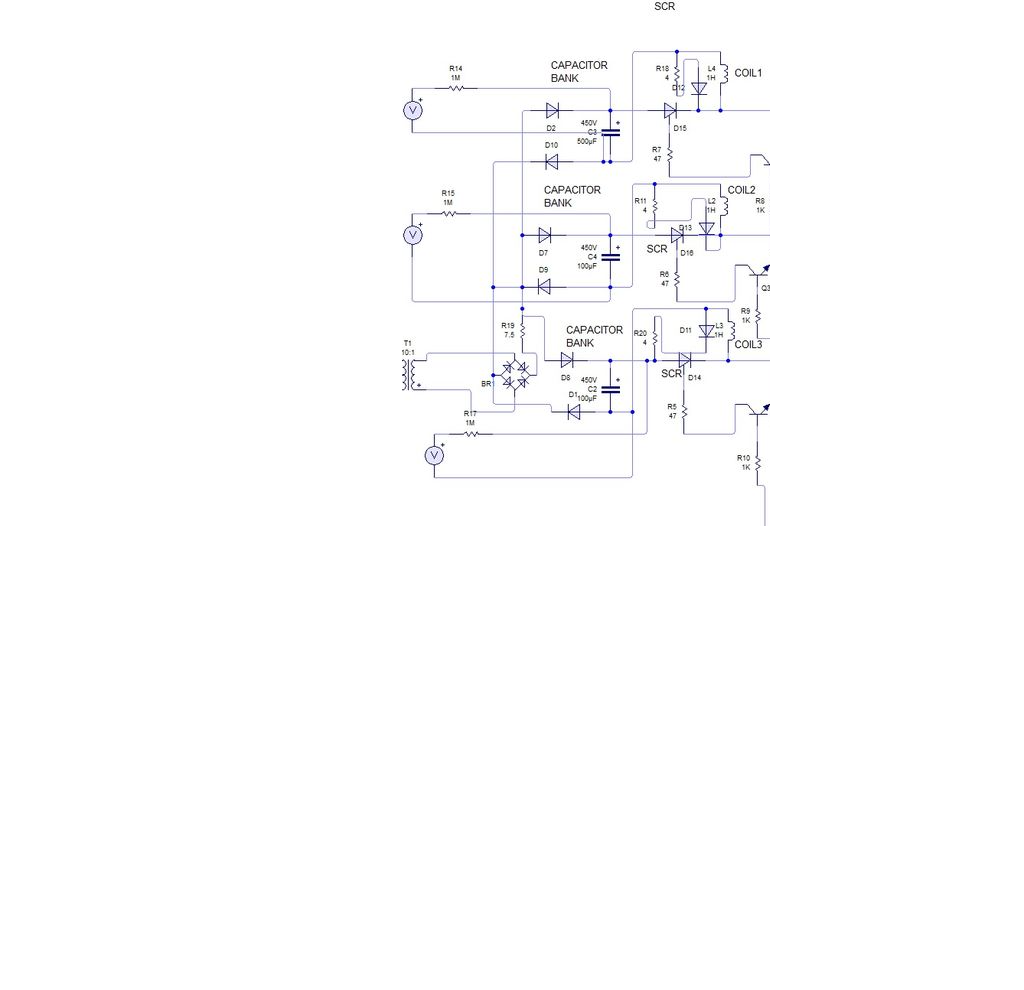I'm trying to charge three capacitors by using my country's net voltage of 230V (60Hz) AC. The net voltage is connected to a diode bridge, which thereby results in approximately 325V DC. Each capacitor can hold 2200uF with up to 450V. I wanted a charging time of approximately 60 seconds, so I should put it in series with a 5.6kOhm resistance. Each capacitor should be connected to a coil, such as seen in circuit one down below.
I've figured this firing circuit out myself, however, I'm still confused about the charging circuit for the projectile accelerator. See this image below:
In this image, we can see the firing circuit, the diode bridge part of the charging circuit and the 'transformer part' of the charging circuit. I'm still a little confused about the diode bridge part.
 Will the current of the diode bridge be split over each of the capacitors and how about the amperage? Should I put the mentioned resistance in series of each capacitor, or just in series of the positive output of the diode bridge. Are the diodes before and after each capacitor really necessary? How come that when allowing the first capacitor to discharge over the first coil, the other capacitors will not discharge? As this should not happen, because the other two capacitors are necessary for the second and final coil.
Will the current of the diode bridge be split over each of the capacitors and how about the amperage? Should I put the mentioned resistance in series of each capacitor, or just in series of the positive output of the diode bridge. Are the diodes before and after each capacitor really necessary? How come that when allowing the first capacitor to discharge over the first coil, the other capacitors will not discharge? As this should not happen, because the other two capacitors are necessary for the second and final coil.
And of course, last but not least: Is the way shown in circuit 2 the right and/or best way to do what I'm trying to achieve?
Thanks in advance and my apologies for the perhaps incorrect usage of specific physics terms, as I'm used to using those of my own language of origin. If anything is still unclear feel free to ask me for clarification


